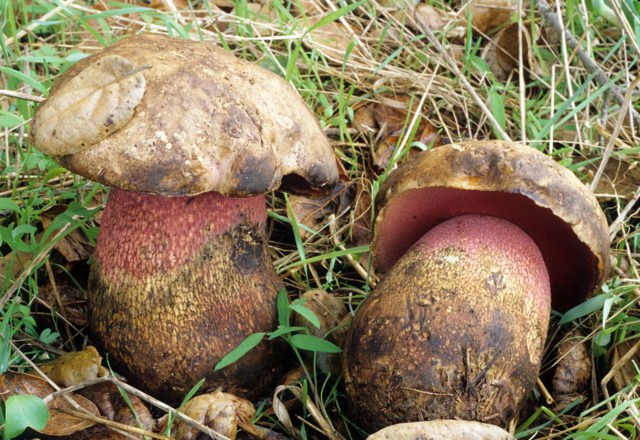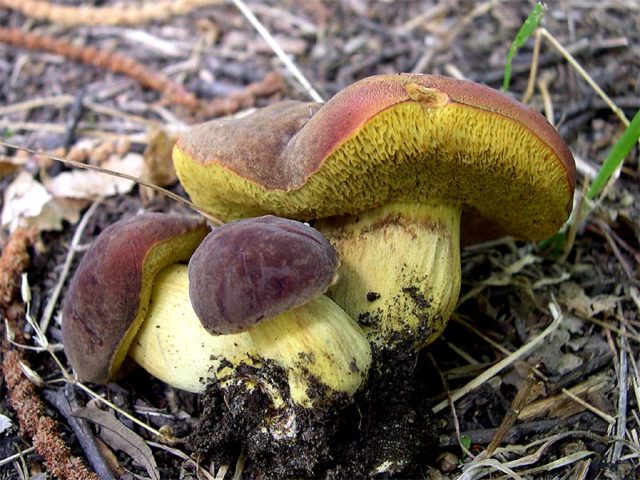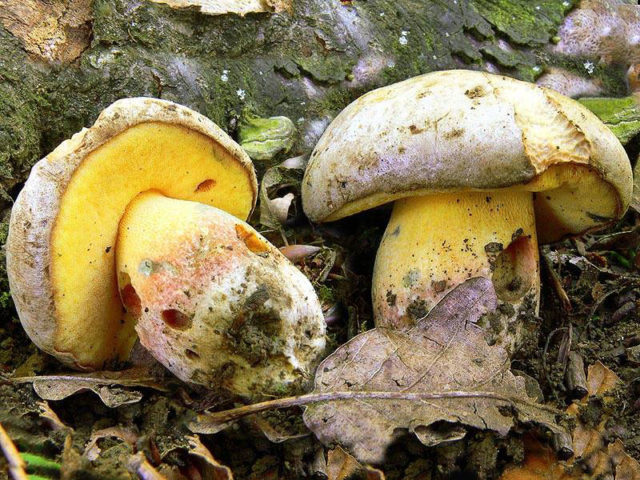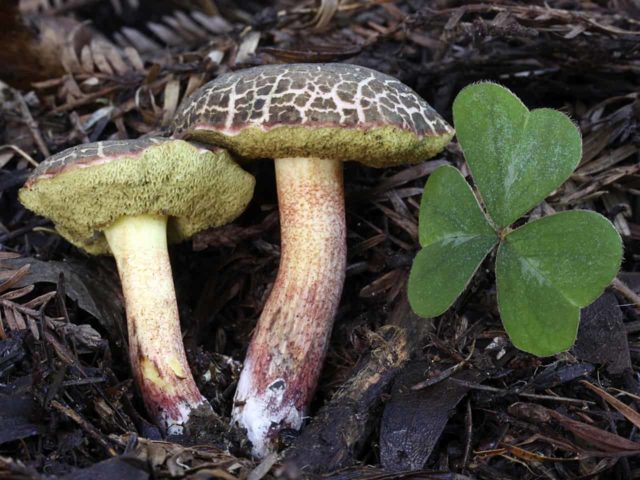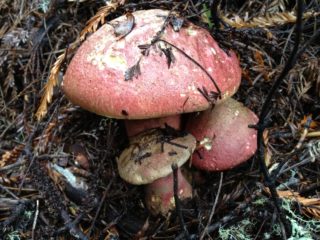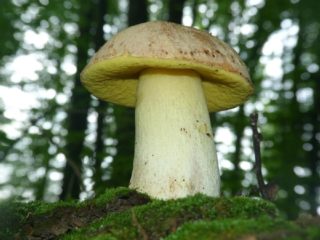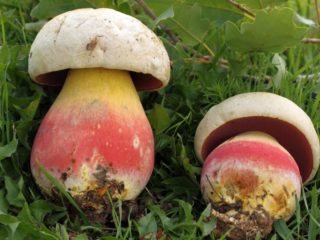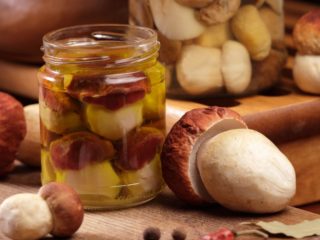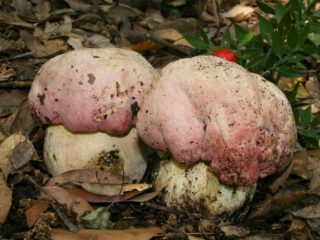Content
Porous boletus is a fairly common tubular mushroom belonging to the Boletovye family of the Mokhovichok genus. It belongs to the edible species with high nutritional value.
What porous boletus looks like
The cap is convex, has a hemispherical shape, reaches 8 cm in diameter. In adult mushrooms, its edges are often uneven. Color - grayish brown or dark brown. Broken skin forms a network of white cracks on the surface.
Leg length - 10 cm, diameter - 2-3 cm. It is light brown or yellowish at the top, gray-brown or brown at the base. The shape is cylindrical or expanding downward.
The layer of tubules is lemon yellow, darkens with growth and acquires a greenish tint, turns blue when pressed. Spores are smooth, fusiform, large. The powder is olive brown or dirty olive.
The flesh is whitish or whitish-yellow, thick, dense, turns blue on the cut. It has no pronounced smell and taste.
Where porous boletus grow
Distributed in European territory. Habitat - mixed, coniferous and deciduous forests. They grow on moss and grass. Forms fungus root with oak.
Is it possible to eat porous boletus
The mushroom is edible. It belongs to the first taste category, appreciated for its fleshy dense pulp.
False doubles
Porosporous boletus has quite a few similar species, but almost all of them are edible. Only beautiful boletus is poisonous, but it does not grow in Russia. It is large in size. The diameter of the cap is from 7 to 25 cm, the shape is hemispherical, woolly, the color is from reddish to olive brown. The leg is reddish-brown, covered with a dark mesh below. Its height is from 7 to 15 cm, thickness is up to 10 cm. The pulp is dense, yellow, turns blue at the break. The fungus belongs to an inedible poisonous species, causes poisoning with a gastrointestinal tract disorder, there is no information on deaths. Grows in mixed forests. Distributed on the west coast of North America.
The flywheel is velvety or waxy. The surface of the cap is free of cracks, velvety, with a bloom resembling frost. Diameter - from 4 to 12 cm, shape from spherical to almost flat. The color is brownish, reddish brown, purple brown, deep brown. In mature, faded with a pinkish tinge. The pulp on the rift turns blue. The stem is smooth, in height - from 4 to 12 cm, in thickness from 0.5 to 2 cm. Color from yellowish to reddish-yellow. It is found in deciduous forests, prefers the neighborhood of oaks and beeches, in conifers - next to pines and spruces, as well as in mixed ones. Fruiting in late summer and early autumn, grows more often in groups. Edible, has a high taste.
Boletus is yellow. The diameter of the cap is from 5 to 12 cm, sometimes up to 20, the surface has no cracks, the skin is usually smooth, sometimes slightly wrinkled, yellowish-brown. The shape is convex, hemispherical, becomes flat with age.The pulp is dense, has a bright yellow color, has no smell, turns blue in the cut. The height of the leg is from 4 to 12 cm, the thickness is from 2.5 to 6 cm. The form is tuberous, thick. Brownish grain or small scales can sometimes be seen on the surface. Distributed in Western Europe, in deciduous forests (oak and beech). In Russia, it grows in the Ussuriysk region. Fruiting from July to October. Edible, belongs to the second flavor category.
Fractured flywheel. The hat is fleshy, thick, dry, similar to felt. At first in the form of a hemisphere, then it becomes almost flat. Color - from light brown to brown. A narrow purple strip can sometimes be seen around the edge. Reaches 10 cm in diameter. Cracks on the surface, revealing a reddish flesh. Differs in the edges turned up. The leg is even, cylindrical, 8-9 cm long, up to 1.5 cm thick. Its color at the cap is yellowish-brown, the rest is red. The spore-bearing layer is yellow, with the growth of the fungus, it first turns gray, then takes on an olive tint. The flesh turns blue on the cut. It is found quite often throughout Russia with a temperate climate. Grows in deciduous forests from July to October. Edible, belongs to the fourth category.
Collection rules
The fruiting time for boletus is summer and autumn. The most active growth is observed from June to September.
They are able to absorb from soil, rainwater and air salts of heavy metals, carcinogens, radioactive and other substances hazardous to health, which can also be found in the exhaust gases of cars.
Use
Porcotic boletus is suitable for any processing methods. They are fried, stewed, salted, pickled, dried.
Before cooking, they need to be soaked for 5 minutes, then drained. Cut large specimens, leave small ones whole. They are brought to a boil, the heat is reduced and cooked for 10 minutes, the foam is periodically skimmed. Then the water is changed and boiled for another 20 minutes. The mushrooms are ready when they have sunk to the bottom.
Conclusion
Porous boletus is a high quality edible mushroom, belongs to the valuable species. It is often confused with fissured, which can be eaten, but its taste is much lower.

